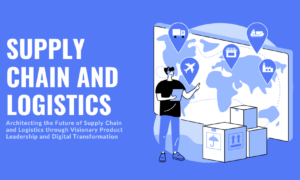Supply chains are often suspended in precarious situations, especially with unprecedented economic turmoil and pandemic-induced adversity. However, given their important role in serving virtually all manufacturing industries globally, versatility is essential. What’s more imperative is the customer ergonomics surrounding supply chains to ensure a seamless end-to-end supply & demand solution. The direct availability for end users or consumers is what often determines the viability and longevity of Supply Chain Network Optimization. Hence, let’s explore five solid methods to achieve this much-needed customer focus in supply chains, shall we?
Supply Chain Network Optimization and Customer-Centricity
Supply Chain Network Optimization is a complete evaluation of the technologies, resources, and tools companies leverage for moving freight on a day-to-day basis. It is a service offered by supply chain firms that is highly recommended by supply chain and logistics experts alike. So, now that we have gathered some perspective on why customer centricity is important in supply chains, let us understand how to go about this and more so – what is customer centricity.
This is the ability to connect with customers, understand their needs, and analyze their buying behavior. Compiling these statistical trends collectively forms a powerful framework to apply in various settings. Data intelligence is key to managing the needs of consumers, prioritizing urgent requirements by apt responsiveness. The aim here is to create a coherently memorable and pleasant buying experience, coupled with a satisfying journey. This boosts both customer loyalty and retention, making revisits to purchase further products & services even more likely.
Five steps for Supply Chain Network Optimization to boost customer satisfaction
1) Optimize every customer touchpoint to strike consumers as often as possible. This could be warm leads at the pre-sales stage, during the sales process itself, or afterward. Customer feedback is sought after to ensure that every stage delivers a fulfilling experience for them. Management cum leadership style, policy, technology & role expectation setting all create a level playing field for all customers. Such platforms benefit both customers and proprietors, not to mention driving engagement rates. Investing in customer retention programs fortifies transparency and forges online communication between consumers and providers. Customers can now share their expectations with their vendors via such channels.
2) Develop a dedicated leadership forum to map customer experience journeys and make everyone feel valued from start to finish. The result? Greater planned results from producer to consumer instill even further confidence in customers to invest in such supply chain networks. They can now trade fearlessly through this process, knowing that there are intrinsic mechanisms in place to safeguard their business operations within the chain. Customer retention via loyalty programs drives sustainable growth and further word-of-mouth to reinforce the continuity of supply chain provisions. Utilizing appropriate CRM tools & technology delivers consolidated information to all stakeholders quickly. Such personalization can also track customers’ long-term goals which can then be fulfilled accordingly.
3) Proactively ideate: take initiative and ownership to fulfill customer demand using data-driven insights for ultimate precision. Now you will be able to closely match their expectations with predictive analytics. Conducting strategic surveys, customized schemes and even promoting innovative methods to identify new trends and collect data can all help. These ultimately drive customer-centricity in supply chains to ensure accountability, efficiency, and productivity. This avoids and prevents untoward disconnects and technical snags from occurring with regular monitoring. Growth rates can be driven towards favorable figures simply by investing and focusing on consumer trends and their effect on how businesses need to meet demand. Consequently, new supply chain routes are formed to fulfill these accordingly. This also minimizes any potential customer attrition, owing to missed opportunities to serve their needs in a timely manner.
4) Evaluate decision-making abilities by using technology to make informed decisions via AI, ML, NLP, computer vision, and so on. Data sharing across various platforms will only enhance visibility throughout the entire system, be it from e-commerce to CRM or vice versa. By doing so, any potential silos are not only eliminated but also prevented from recurring or thriving on unfavorable data.
Training on customer empathy and objection handling is also essential to ensure a seamless positive customer output, where all their concerns are promptly and effectively addressed. Marketing alignment helps to track, manage, and convert potential customer leads. This, in turn, drives further successful conversions, hence boosting sales volumes. With greater demand comes the need for more supply, encouraging a positive flow supply chain to ensue. Sales efforts can also easily be gauged via CRMs which unify all collated data. Analytics in supply chains is always an essential godsend.
5) Collect & share data across the company for better analytical insights. Granular customer classification enables revealing unaddressed sales opportunities without impacting the sentiments of other patrons. It’s almost akin to performing a KYC on a customer to find out exactly what they want, where it’s needed, when, how (in what format), and perhaps even why (the reason behind the request). User experience is important, as it also drives transparency to avoid any stock mismatch. Value-based sales offer more productive outputs, as their success mainly depends on the customer experience, deliverability, satisfaction rates, and so on.
Don’t forget that it’s not just the product itself that does the talking, but also HOW it’s delivered to the customer. How does it make them feel? What do you do as a brand to make them feel valued? Why do they feel that this would benefit them? When and where would they go to find and buy XYZ products or services? Evoking such questions will really drive your supply chains with curious and interested customers willing to buy & try your services. These experiences become memorable and relatable emotive ones…
Summary – customers championing your supply chains!
We need to listen to customers, implement their feedback or suggestions, and then encourage further intervention at every touchpoint. Streamlining this entire process and being opportunistic by creating inlets to interact with customers is what will set you up for supply chain success. Always keeping the customer at the center of everything and continuously reminding them of just how important they are to your business is the aim here. Live tracking, advanced analytics, and end-to-end visibility cement the trust factor with all customers. They can then confide in a brand’s accountability. Demand planning helps to forecast what customers will need and when, whilst order management ensures that inventory is always ready.
Always remember that buying history provides valuable insights into customer trends which can then be predicted. Ultimately, we must aim for an omnichannel experience, where customers are in the driving seat of the supply chain and experience every aspect in a fulfilling manner.



































